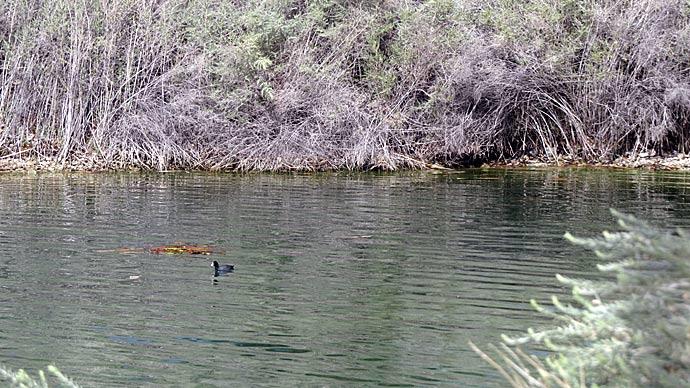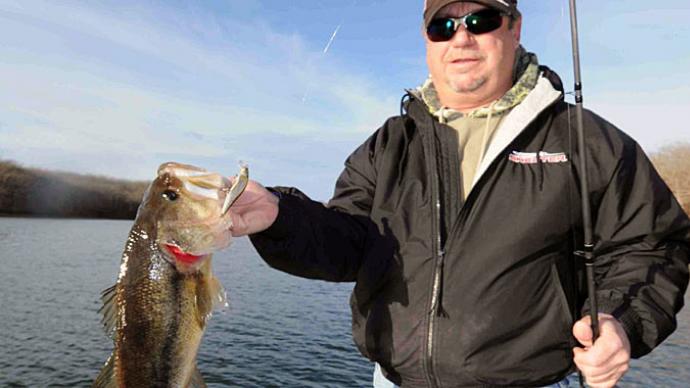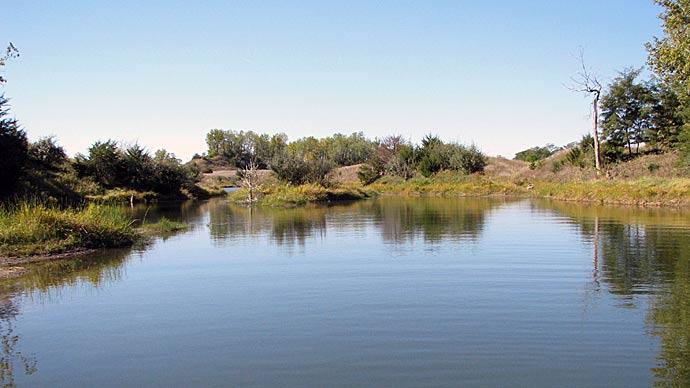
Other than birth and death there are no absolutes in nature. Works for us and every other organism on this planet. Once born the things that affect us during that life occur within a range of possibilities. The extent of the range and where a particular factor is in that range has everything to do with the outcome. Much like an excellent fast ball as it approaches an excellent batter. A plethora of possibilities exist... might be a strike and then again the ball may end up in the parking lot with four runners crossing home plate. This is important to understand in water management.
Fish and aquatic environments are excellent candidates for the study of "ranges" and how the interactions of factors that vary produces different outcomes. The best genetic quality Florida largemouth starting in great health then required to grow in a sterile environment will not grow like it would in an appropriately nutrient supplied environment. Fish are affected and have very specific ranges of tolerance to many factors in their environment, not the least of which is water quality. We have spent a great deal of time and effort trying to understand these tolerances so we can understand the effects of water quality to their and our world. We have used these studies and our perceptions to define "standards" and to color public opinion.
Through all of this work we, as amigos de agua, have developed considerable public (and personal) bias towards perceptions of "desirable" water quality. The only "good" water is clear water. We have promoted a "clear water" bias that now defines our state enforced water quality standards. The perception is so pervasive that it has become a key descriptor of aesthetics for most people and often defines successful water management in the eyes of the masses. I can't tell you how many clients over the years have asked for services and designs that create and maintain "clearer" water. Oh, by the way, while finishing such requests with "and get me better fishing."
From the fish's perspective, and those of us charged with creating better fisheries, sterile, clear water is not our best friend. It represents low dissolved nutrients to start the food chain and creates conditions which promote aquatic macrophyte growth that too often becomes excessive. So excessive that even when there is a seasonal availability of nutrients, such as the natural flushing of wetlands in the spring and fall, the plants present tie up the nutrients rendering them unavailable for the growth of plankton for season after season. Many times the only answer is broad range vegetation control.
Don't get me wrong, excessive nutrient enrichment is detrimental to fish and to our world. My point is that our clear water bias has caused us as scientists, water policy decision makers, fish guys, and amigos de agua to focus on a very detailed understanding of eutrophication or "enrichment" of aquatic systems. Meanwhile we have developed very little understanding of the opposite end of the range known as "oligotrophy" or nutrient deficiency. Like all ranges, too much and too little creates the "problem."
Working for decades in headwater states with hard rock and nutrient poor watersheds I face oligotrophy every day. My experience teaches me there are situations where nutrient enrichment in an aquatic system is a good thing. Witness the beneficial effect of mass die offs of spawning runs of salmon in our northwest streams. We are just starting to understand that the rapidly dissolved nutrients from these rotting carcasses represents the majority of nutrients that create the energy that drives these streams annually. We are also starting to understand that as we harvest and interfere, denying appreciable numbers from making their spawning runs, we have less and less fish being naturally produced. Yes, we not only are creating less spawning products but those that are spawned have an increasingly "oligotrophic," nutrient starved system upon which to try to derive sustenance. Fishery researchers in Washington, British Columbia and Alaska estimate that only 6%-7% of the nutrients that historically entered these stream; are presently being deposited. To offset this deficiency, water managers have started to take the remains from salmon processing plants to process them further into fish meal "analogs" and place them back in the streams where the parental stocks have diminished. These large pellets, approximately 1" in diameter, when applied to nutrient starved streams at rates up to 0.8 tons per acre, have shown to increase survival and growth of resident fish. Sounds a lot like a stream feeding program, as oppose to a fish feeding program. Different... yet the same.
Man-caused nutrient deficiencies like these are collectively referred to as "cultural oligotrophy." Another commonly realized nutrient reduction in waters comes from the placement of on-channel dams. Reservoirs impounded behind these dams create a still water environment that rapidly uses and then ties up nutrients which enter the reservoir. Numerous western Coldwater reservoirs that start out as incredible resources for plankton dependant open water Kokanee salmon and trout fisheries realize rapid declines as the nutrients which grow plankton become entrained in longer cycling, microbial controlled nutrient processes. These stream and river systems that were impounded are often already oligotrophic and thus down-stream of these reservoirs "ultra-oligotrophy" starts to define the potential for fish production. While the thermal regimes these tailwaters often realize are ideal for fisheries, it is important to acknowledge, as in the case of many projects we have worked on, the benefits of providing nutrient additions such as supplemental feeding of fish. I have shared some of the age and growth information we have collected in oligotrophic tailwaters that we supplementally feed (approximately 0.6-1.1 tons per acre per year). The results are phenomenal.
The same thing happens in your lake or pond. It is a nutrient sink (or nutrient dead end) designed by the great one to tie up those nutrients and retain them in slower, less volatile nutrient processes than plankton production. A pond is designed to be efficient and conserve precious "naturally limited" nutrients such as phosphorous and nitrogen. Over time the pond and waters downstream become less and less productive.
Enter the need for the fertilizer man and "pool" you get an instant treatment of the problem in your pond. While it may seem that the annual prescription of fertilizers for your pond is just good marketing for the applicator it is not, fertility provides an important service for continued fish production in the right climate areas. Where I practice, systems are so nutrient deficient that fertilizer applications are ineffective because, as I have said before, it's like trying to irrigate the Sahara. Too much need to be met with a short duration pulse of nutrients, plus the chemical/ plankton/microbial systems that process it are different. It's important to consider the many mechanisms that provide a source of usable nutrients that enter the natural energy flow (food chain in most cases) available to you as a pond owner.
There are many decisions and actions to take in a management program for all of us. I like to operate under the theorem that it's always better to be a part of the solution than a part of the problem. Appropriate nutrient levels in natural systems are an essential part of the formula that produces restoration and successful fisheries production. Most of us know that but we have to help others overcome biases. Clear water doesn't represent the optimum water for fish production. Remember the "range" thing; it is more valuable to consistently hit doubles than one homerun for every 5 at bats. Batter up, Nature's about to make her pitch.
Reprinted with permission from Pond Boss Magazine



